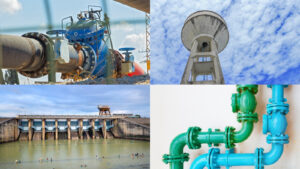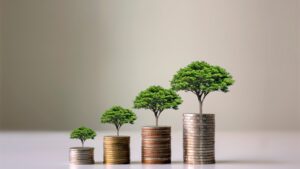Did you hear the news that Australia is leading the way in green stormwater infrastructure management? It is true considering their innovative journey towards success in this realm. This innovative approach aims to reduce the impact of stormwater runoff on the Australian environment and communities. But how exactly is this being achieved? The answer lies in the clever integration of smart technology. This cutting-edge approach not only helps protect Australian waterways but also provides valuable insights into urban water cycles and supports sustainable development at a larger scale.
In this article, we reveal the employment of smart technology in optimising green stormwater infrastructure management in Australia.
In this article, we reveal the employment of smart technology in optimising green stormwater infrastructure management in Australia.
We will discover
- Current State of Stormwater Management in Australia
- What is Green Infrastructure for Stormwater Management?
- Main Ways Smart Technology Can Optimise Green Stormwater Infrastructure Management
- Automated Control Systems
- Energy Efficiency Enhancement
- Utilising Water Quality Sensors
- AL, ML, and Predictive Analytics
4. Enhancing Green Stormwater Infrastructure Management in Australia via Smart Tools
Current State of Stormwater Management in Australia
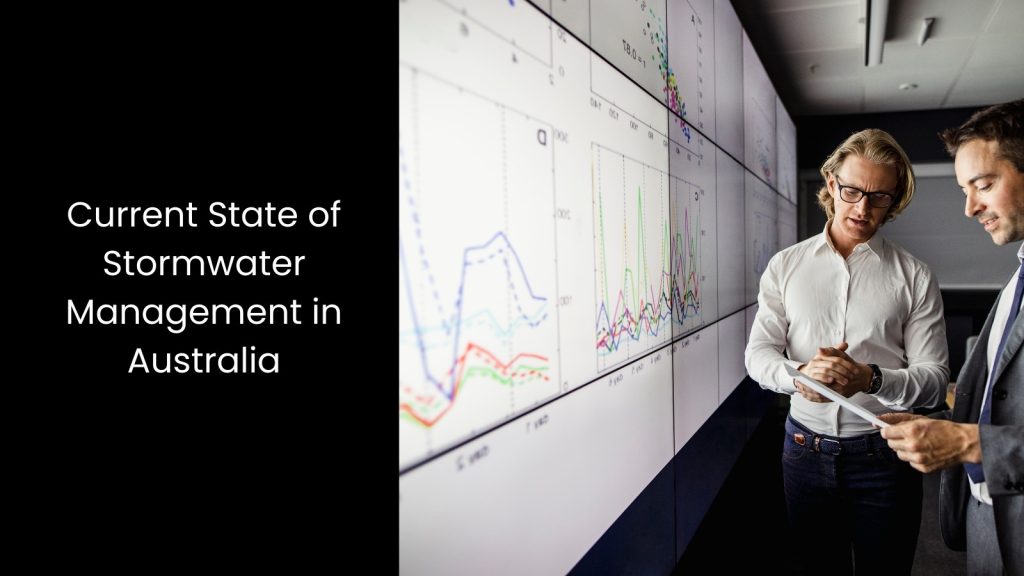
- It is a known fact that Australia faces complex stormwater management challenges due to its distinct climate and diverse landscapes.
- As it is visible, facts like rapid urbanisation, climate change, and water security concerns have put significant pressure on stormwater infrastructure, making it important to adopt innovative solutions.
- Gone are the days when stormwater management relied on pipe networks and concrete channels to divert water away from urban areas and prevent flooding. However, this method caused environmental issues like water quality degradation, loss of aquatic habitats, and increased urban heat island effects.
- Since there has been an urging necessity to address these problems, Australia has shifted towards Water Sensitive Urban Design (WSUD), which integrates stormwater management into the urban landscape using vegetation and permeable surfaces to manage runoff. You know that Australian climate change has worsened the situation, with more intense storms and rising sea levels threatening the existing infrastructure.
- In the meantime, urbanisation also leads to more impervious surfaces, increasing runoff and pollution in waterways. This is where Australia’s ageing infrastructure, much of which is decades old, struggles to handle modern demands.
- However, every issue has a solution. This is when the adoption of reinvented drainage systems and integrated stormwater management systems highlights a move toward sustainable solutions.
What is Green Infrastructure for Stormwater Management?
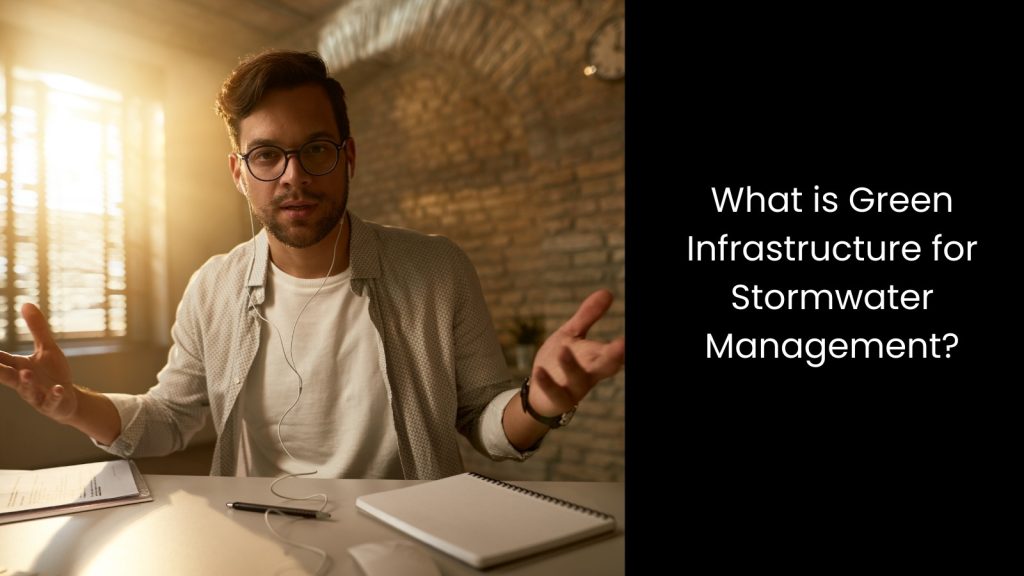
- Green infrastructure for stormwater management refers to a sustainable approach that uses natural systems like plants, soil, and permeable surfaces to absorb and filter stormwater. Instead of relying on traditional infrastructure, which involves pipes, concrete channels, and drains to quickly remove water from urban areas, green infrastructure works with the environment to manage runoff more effectively.
- The main difference between traditional and green infrastructure lies in their goals: traditional systems focus on fast water removal, while green infrastructure aims to mimic the natural water cycle by slowing, filtering, and reusing stormwater.
- Australia pays close attention to green infrastructure because it offers multiple benefits for each party involved, like the environment, authorities, and the general public. This shift to more eco-friendly solutions helps protect Australia’s environment and builds resilience against future climate challenges.
Main Ways Smart Technology Can Optimise Green Stormwater Infrastructure Management
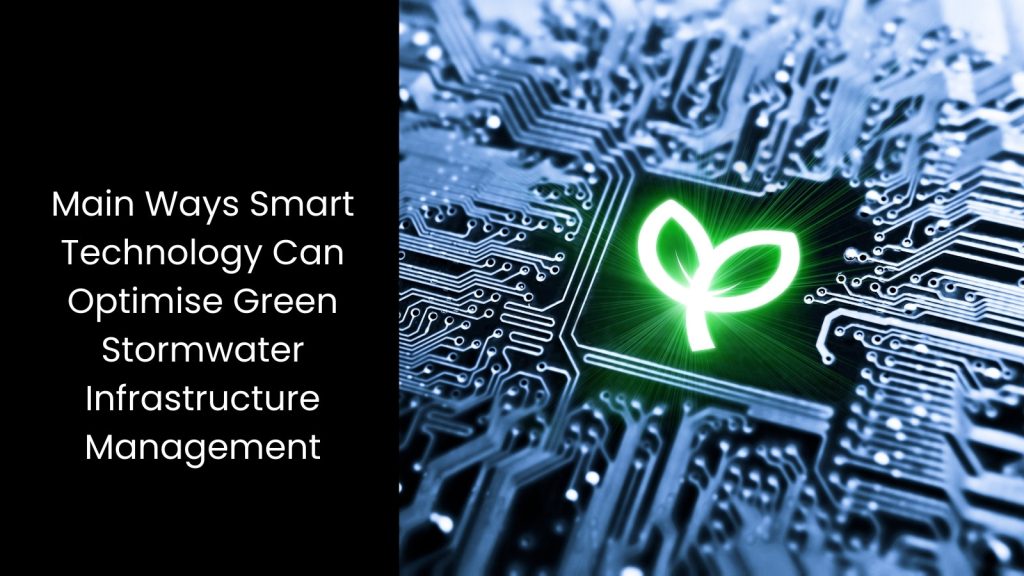
Automated Control Systems
Automated control systems play a key role in optimising green stormwater infrastructure known as GSI management in Australia by using technology to make real-time adjustments in water flow. Let us explain how.
These smart controls are integrated into GSI systems like green roofs, permeable pavements, and rain gardens, allowing them to adapt based on current weather conditions and water levels. For example, during heavy rainfall, automated systems can redirect stormwater to storage areas or slow its release into the ground to prevent flooding. In dry conditions, they can retain water to support vegetation in green spaces. This dynamic management helps ensure that stormwater is effectively absorbed, filtered, and reused rather than overwhelming drainage systems or polluting nearby water bodies.
As climate change leads to more unpredictable weather patterns in Australia, these automated systems become even more beneficial. As they can adjust in real time, they reduce pressure on traditional stormwater systems, which may not be built to handle increased runoff from urbanisation and more intense storms.
They also improve water quality by allowing GSI systems to filter pollutants more efficiently and support natural habitats.
These smart controls are integrated into GSI systems like green roofs, permeable pavements, and rain gardens, allowing them to adapt based on current weather conditions and water levels. For example, during heavy rainfall, automated systems can redirect stormwater to storage areas or slow its release into the ground to prevent flooding. In dry conditions, they can retain water to support vegetation in green spaces. This dynamic management helps ensure that stormwater is effectively absorbed, filtered, and reused rather than overwhelming drainage systems or polluting nearby water bodies.
As climate change leads to more unpredictable weather patterns in Australia, these automated systems become even more beneficial. As they can adjust in real time, they reduce pressure on traditional stormwater systems, which may not be built to handle increased runoff from urbanisation and more intense storms.
They also improve water quality by allowing GSI systems to filter pollutants more efficiently and support natural habitats.
Energy Efficiency Enhancement
As this integrates smart grids with GSI systems, energy consumption can be significantly reduced in stormwater pumping and treatment facilities. Did you know this?
These smart grids use real-time data to manage energy use, ensuring that pumps and treatment processes only operate when necessary, reducing wasted energy. For example, during low rainfall periods, the smart grid can lower the energy output of pumps, saving power, while in heavy storms, it can ensure pumps work efficiently to prevent flooding. This balance between energy use and stormwater needs helps reduce overall energy consumption, making stormwater management more sustainable.
In Australia, where climate change is causing more extreme weather, managing energy efficiently is a key factor for both environmental protection and cost savings. Traditional stormwater systems tend to run continuously or at full capacity, consuming large amounts of energy even when not needed.
On the other hand, smart technology enables GSI to operate only when conditions demand it, cutting down on unnecessary energy use.
These smart grids use real-time data to manage energy use, ensuring that pumps and treatment processes only operate when necessary, reducing wasted energy. For example, during low rainfall periods, the smart grid can lower the energy output of pumps, saving power, while in heavy storms, it can ensure pumps work efficiently to prevent flooding. This balance between energy use and stormwater needs helps reduce overall energy consumption, making stormwater management more sustainable.
In Australia, where climate change is causing more extreme weather, managing energy efficiently is a key factor for both environmental protection and cost savings. Traditional stormwater systems tend to run continuously or at full capacity, consuming large amounts of energy even when not needed.
On the other hand, smart technology enables GSI to operate only when conditions demand it, cutting down on unnecessary energy use.
Utilising Water Quality Sensors
These smart sensors detect pollutants, temperature changes, and chemical imbalances in real time. It allows for more effective management of water quality in stormwater systems.
This is how it occurs: When rainwater runs off urban surfaces, it usually collects harmful substances like oils, heavy metals, and chemicals. Without proper monitoring, these pollutants can enter rivers, lakes, and oceans, causing environmental damage.
Water quality sensors continuously track the condition of stormwater as it moves through GSI systems like green roofs, permeable pavements, and rain gardens. If they detect a problem, such as high levels of pollutants or sudden temperature changes, the system can alert managers to take action immediately. This rapid response prevents contamination from reaching natural water bodies and protects aquatic ecosystems.
These sensors also help GSI systems by enabling better maintenance. Since they can easily identify issues early, they reduce the need for costly repairs or manual testing as well.
This is how it occurs: When rainwater runs off urban surfaces, it usually collects harmful substances like oils, heavy metals, and chemicals. Without proper monitoring, these pollutants can enter rivers, lakes, and oceans, causing environmental damage.
Water quality sensors continuously track the condition of stormwater as it moves through GSI systems like green roofs, permeable pavements, and rain gardens. If they detect a problem, such as high levels of pollutants or sudden temperature changes, the system can alert managers to take action immediately. This rapid response prevents contamination from reaching natural water bodies and protects aquatic ecosystems.
These sensors also help GSI systems by enabling better maintenance. Since they can easily identify issues early, they reduce the need for costly repairs or manual testing as well.
AL, ML, and Predictive Analytics
These advanced technologies use data to forecast storm events, runoff patterns, and weather conditions. This also enables GSI systems like green roofs, permeable pavements, and rain gardens to operate more efficiently.
When analysing past weather data and real-time information, AI and ML models can predict when heavy rainfall is likely to occur and how much runoff will be generated. This allows stormwater plant managers to prepare GSI systems in advance, ensuring they can handle the increased water flow and prevent flooding.
For example, if predictive analytics indicate a major storm, systems can divert excess water to detention areas or adjust water levels in rain gardens. In another way, AI and ML can optimise maintenance schedules by identifying patterns that predict when a system may need cleaning or repairs. Instead of relying on fixed maintenance schedules, stormwater systems can be serviced exactly when needed, reducing costs and ensuring continuous performance.
Those traditional systems can react to storms after they happen, but AI-driven GSI systems can act before the event, mitigating risks and improving resilience. Moreover, predictive analytics help improve water quality by forecasting pollution risks.
Therefore, if they can integrate AI, ML, and predictive analytics, Australia can enhance the efficiency, sustainability, and effectiveness of its green stormwater infrastructure, supporting both urban development and environmental protection.
When analysing past weather data and real-time information, AI and ML models can predict when heavy rainfall is likely to occur and how much runoff will be generated. This allows stormwater plant managers to prepare GSI systems in advance, ensuring they can handle the increased water flow and prevent flooding.
For example, if predictive analytics indicate a major storm, systems can divert excess water to detention areas or adjust water levels in rain gardens. In another way, AI and ML can optimise maintenance schedules by identifying patterns that predict when a system may need cleaning or repairs. Instead of relying on fixed maintenance schedules, stormwater systems can be serviced exactly when needed, reducing costs and ensuring continuous performance.
Those traditional systems can react to storms after they happen, but AI-driven GSI systems can act before the event, mitigating risks and improving resilience. Moreover, predictive analytics help improve water quality by forecasting pollution risks.
Therefore, if they can integrate AI, ML, and predictive analytics, Australia can enhance the efficiency, sustainability, and effectiveness of its green stormwater infrastructure, supporting both urban development and environmental protection.
Enhancing Green Stormwater Infrastructure Management in Australia via Smart Tools
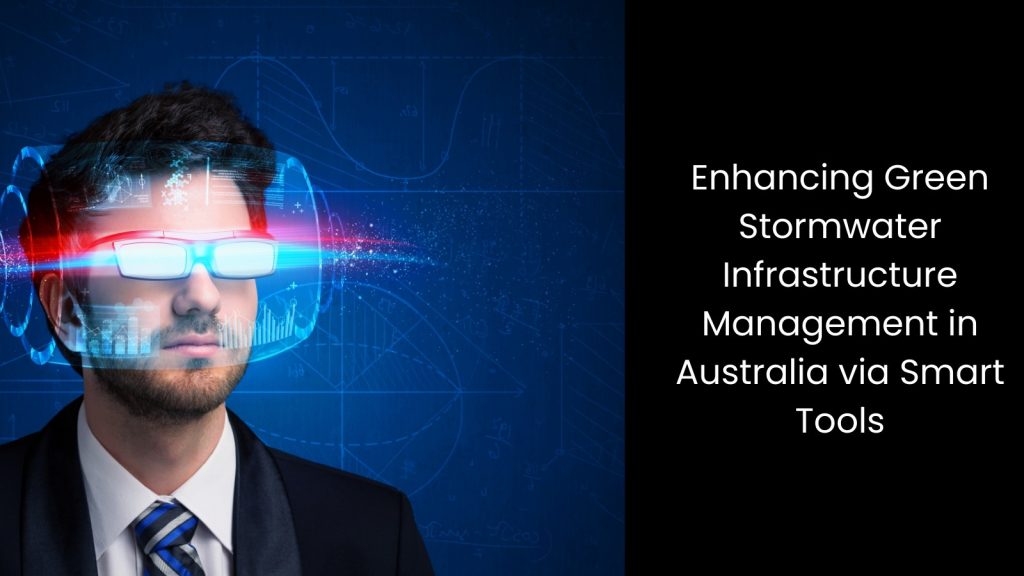
When the whole world is running behind profitability, it is not easy for Australia to balance out profitability with sustainability on the same scale. You will certainly need the right approach for that. Embracing smart technology is not just a step forward; it is a leap towards a greener, more resilient future for Australia. By enhancing green stormwater infrastructure with a robust Wastewater Asset Management Solution from a reputed partner, you are making a way for a cleaner, smarter tomorrow.




